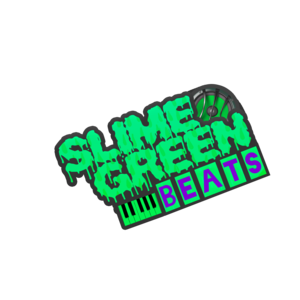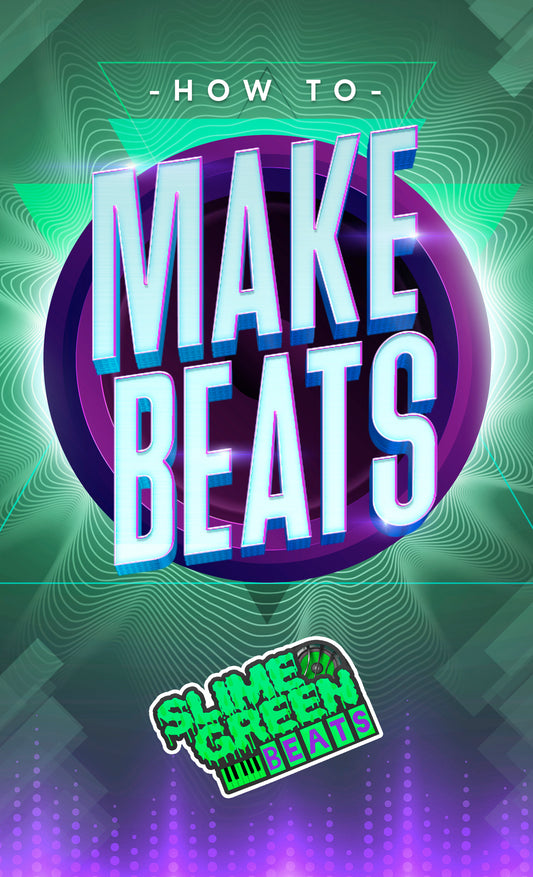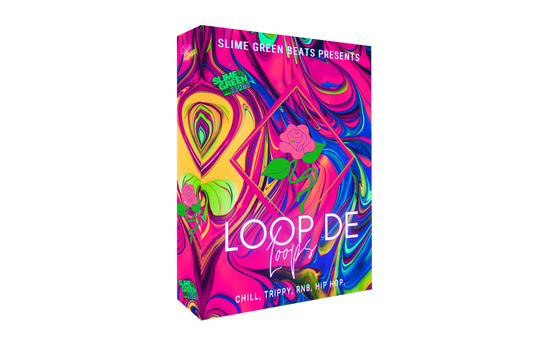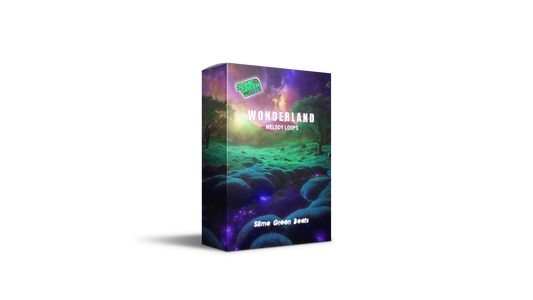Ever thought about turning your laptop into a full-blown orchestra? It's totally possible with virtual instruments. These digital tools can transform your music production, whether you're just starting out in your garage or aiming for a Grammy. They're versatile, cost-effective, and can mimic almost any instrument you can think of. Plus, they blend seamlessly with real instruments, giving your tracks a rich, full-bodied sound. Ready to dive in and learn how to use virtual instruments in your productions like a pro? Let's get started.
Key Takeaways
- Virtual instruments can turn your computer into a powerful music production tool.
- Sampling and layering are crucial techniques for adding depth to your tracks.
- Quantization helps keep your rhythm tight but don't overdo it, or it might sound robotic.
- Reverb adds space to your music, but too much can muddy your mix.
- Choosing the right DAW is essential for your music style and workflow.
Unleashing the Power of Virtual Instruments
Why Your Laptop is the New Orchestra
Once upon a time, you'd need a whole room full of musicians to create a symphony. But now? Your laptop's got you covered. With a few clicks, you can summon an entire orchestra, from violins to tubas, all without leaving your bedroom. It's like having your own personal concert in a box. Just imagine, you're the conductor, and your DAW is the stage. With digital tools and AI, you can shape sounds in ways that Beethoven could only dream of.
From Garage to Grammy: Virtual Instruments in Action
Remember when your garage band sounded like, well, a garage band? Those days are over. With virtual instruments, even your cat's footsteps can be turned into a Grammy-winning beat. Seriously, artists like Billie Eilish have shown that you don't need a fancy studio to make chart-topping hits. Just a laptop, some creativity, and maybe a sibling who knows their way around a DAW. Virtual instruments let you experiment with sounds that were once out of reach, turning your humble abode into a hit-making factory.
The Secret Sauce: Blending Real and Virtual Sounds
Here's the deal: the magic happens when you mix real and virtual sounds together. Think of it like a musical smoothie. You start with some live guitar, throw in a dash of virtual synths, and blend until smooth. The result? A rich, layered track that sounds both organic and futuristic. Even big names like Hans Zimmer use this approach to create those epic movie scores. It's all about finding that perfect balance, where the digital meets the analog in a beautiful symphony of sound.
"Don't be afraid to mix it up. The best tracks often come from unexpected combinations of sounds."
Sampling: The Art of Borrowing Without Asking
How to Steal Like a Pro (Legally)
Alright, let's talk about sampling. You're not actually stealing (promise!). It's more like borrowing with a creative twist. Think of it as taking a sound and giving it a whole new life. Sampling is all about reimagining music, and yes, it's totally legal if you follow the rules. Just make sure you get the proper licenses or use royalty-free samples to keep the lawyers happy.
- Find the Right Sample: Search for sounds that resonate with your vibe. Old records, nature sounds, or even a random noise you recorded on your phone can work.
- Chop It Up: Use your DAW to slice and dice the sample. Get creative with it!
- Transform: Apply effects, change the pitch, or reverse it. Make it yours.
Loops: The Musical Equivalent of Leftovers
Loops are like musical leftovers—you can make something amazing with them if you know what you're doing. They're short, repeatable sections of music that can form the backbone of your track. Whether it's a catchy drum loop or a hypnotic melody, loops can add instant groove.
- Drum Loops: Perfect for laying down a quick beat.
- Melodic Loops: Add these for some instant ear candy.
- Bass Loops: The foundation of your track, keeping everything grounded.
Sampling Legends: Who Did It Best?
Some of the biggest names in music have mastered the art of sampling. Kanye West is known for his genius use of samples, turning classic tracks into something fresh and exciting. Then there's DJ Shadow, who practically wrote the book on sampling with his groundbreaking album Endtroducing.
Sampling isn't just about taking a piece of music; it's about creating a conversation between the past and the present. It's a way to honor the original while crafting something entirely new and exciting.
So, go ahead and dive into the world of sampling. With the right approach, you can create tracks that are both familiar and innovative, all while staying on the right side of the legal line.
Layering Sounds: More is More

The Lasagna Approach to Music Production
Imagine your track as a delicious lasagna. Each layer adds flavor, texture, and depth. In music, layering involves stacking different sounds to create a rich, full-bodied audio experience. Think of it like adding layers of cheese, sauce, and pasta. Each sound has its own space and purpose, just like each ingredient in your lasagna.
Here's how to make your sonic lasagna:
- Choose your base: Start with a solid foundation, like a bassline or a drum loop.
- Add your layers: Introduce melodies, harmonies, and other elements that complement your base.
- Season to taste: Use effects like reverb or delay to blend your layers seamlessly.
Avoiding the Mud: When Layers Attack
Layering is great, but too much can turn your track into a muddy mess. The key is balance. Make sure each layer has its own frequency space and doesn't clash with others. Here's a quick guide:
- EQ each layer: Cut unnecessary frequencies to prevent overlap.
- Pan wisely: Spread your sounds across the stereo field to give each one room to breathe.
- Volume control: Keep an ear on levels to ensure no single layer overpowers the mix.
Creating Sonic Depth Without a Shovel
You don't need a shovel to dig deep into your mix. By exploring essential sound layering techniques, you can add depth and complexity without cluttering your track. Think of layering as painting with sound:
- Foreground elements: These are your main sounds, like vocals or lead instruments.
- Midground elements: Supportive sounds that add texture, like pads or rhythm guitars.
- Background elements: Subtle effects or ambient sounds that create an atmosphere.
"Layering is about building a world within your music, where every sound has a place and purpose."
With these techniques, your tracks will have the depth and richness of a well-cooked lasagna, without the calories.
Quantization: The Rhythm Police
When to Let Your Music Run Wild
Ah, quantization, the musical equivalent of a strict school principal. It's there to keep everything in line, making sure every note hits the beat with military precision. But sometimes, you gotta let your music run wild and free, like a kid on summer break. Over-quantizing can make your track sound more robotic than a Roomba at a disco. So, when should you let things slip a bit? Think jazz solos, live jam sessions, or anything where you want that human touch to shine through.
The Fine Line Between Tight and Robotic
Quantization is the art of walking a tightrope. Too loose, and your track sounds like a toddler playing with pots and pans. Too tight, and it’s a robotic symphony with zero soul. The trick is finding that sweet spot where your beats are tight but still have a bit of swagger. Imagine a drummer who's had just the right amount of coffee—not jittery, but definitely awake. Learn essential techniques to perfect this balance.
Swing It Like You Mean It
Swing is the secret ingredient that gives your music that irresistible groove. It's like adding a pinch of spice to a dish—too little, and it’s bland; too much, and it’s overwhelming. To swing it like you mean it, adjust those notes off the grid just enough to make people want to tap their feet. Remember, even machines can have a sense of rhythm if you program them right. So, go ahead, give your beats some swing and watch your tracks come alive!
Sometimes, the best music moments happen when things aren’t perfect. Embrace the chaos and let the groove guide you.
Reverb: Creating Space Without Moving Furniture
Vocals in a Cathedral: Reverb Done Right
Imagine singing in a grand cathedral, your voice soaring through the air like an angel on a coffee high. That's the magic of reverb. Reverb can turn your tiny bedroom studio into a vast concert hall with just a few tweaks. When applying reverb to vocals, less is often more. You want to enhance the voice, not drown it. Consider using a plate reverb for a smooth, classic sound, or a room reverb for a more intimate vibe. Play around with the decay time to find that sweet spot where your vocals shine.
The Ghost of Reverb Past: Avoiding Overuse
Reverb can be your best friend or your worst enemy. Too much, and your mix sounds like it's coming from the bottom of a well. To avoid this ghostly fate, start with subtle settings and gradually increase until you hit the right amount of spaciousness. A/B testing is crucial here—listen to your track with and without reverb to ensure you're not overdoing it. And remember, different instruments may need different reverb settings. Guitars and snare drums can benefit from a touch of room reverb, while strings might need a hall reverb for that lush, cinematic feel.
Reverb on a Budget: Free Tools That Shine
You don't need to break the bank to get great reverb. There are plenty of free plugins that can give you professional results. Check out TAL-Reverb-4 or the epic Reverb and Delay Effects in FL Studio for some excellent options. These tools can mimic expensive hardware, providing versatility without the cost. Just remember, it's not about the price tag—it's about how you use it. Experiment with different settings and find what works best for your mix.
Reverb is like salt in cooking—use it wisely, and it enhances the flavor. Use too much, and it overpowers the dish. Balance is key.
Virtual Instruments: Your New Best Friends
Synthesizers: Not Just for Sci-Fi Anymore
Alright, let's talk about synthesizers. These bad boys aren't just for those eerie sci-fi soundtracks anymore. They're like the Swiss Army knife of the music world. You can create anything from a deep bass that shakes the room to a high-pitched whistle that makes dogs bark three blocks away. The beauty of synthesizers is in their versatility—you can shape and mold sounds in ways that are only limited by your imagination. Want to add a little funk to your track? Dial in a funky synth bass. Need a pad that sounds like it's from the year 3000? Synths have got you covered.
Drum Machines: Keeping the Beat Without the Sweat
Drum machines are the unsung heroes of the music production world. They keep the beat going without breaking a sweat. Whether you're laying down a simple beat for a pop track or creating complex rhythms for electronic music, drum machines have your back. Here's a quick list of what they can do:
- Generate a variety of drum sounds and rhythms
- Allow for easy programming and sequencing
- Offer endless possibilities for sound customization
With a drum machine, you can be your own drummer, without needing a lifetime supply of drumsticks.
Samplers: Your Personal Sound Library
Samplers are like having a library of sounds at your fingertips. They let you take recorded sounds and play them back at different pitches or speeds. This means you can turn a simple "meow" from your cat into a symphony. Here's why samplers are awesome:
- They let you manipulate any sound you can record.
- You can layer multiple samples to create rich textures.
- They offer endless creative possibilities—turn anything into an instrument!
"With samplers, the world is your orchestra. Capture the sounds around you and make them sing in ways you never thought possible."
Incorporating virtual instruments like synthesizers, drum machines, and samplers into your DAW setup can revolutionize your music production process. Not only do they offer a vast array of sounds, but they also allow for a level of creativity and flexibility that traditional instruments simply can't match. So go ahead, explore these virtual wonders and see where your creativity takes you.
The DAW: Your Digital Playground

Choosing the Right DAW for Your Style
Alright, let's talk DAWs. Think of them as your music-making playground. You’ve got Ableton Live, FL Studio, Logic Pro, and Pro Tools, just to name a few. Each one has its quirks and perks, like different rides in a theme park. Choosing the right DAW is like picking the right ride for your thrill level. Are you into electronic beats? Maybe Ableton Live is your jam. More into recording live bands? Pro Tools might be your best buddy. Try a few out before settling down—it's like dating, but with less drama.
Hidden Features That Will Blow Your Mind
Now, once you've picked your DAW, it’s time to dig into those hidden treasures. These aren’t just tools; they’re like secret cheat codes in a video game. Ever heard of automation? It’s like having a ghost hand tweak the knobs for you. Or how about time-stretching? Warp those sounds like you're bending time itself. And templates? Oh boy, they’re like pre-made sandwiches—saving you time so you can focus on the tasty stuff.
Why Templates Are Your New Best Friend
Speaking of templates, let’s give them a moment in the spotlight. Imagine starting every project with all your favorite settings and tracks laid out perfectly. It’s like having your morning coffee ready before you even wake up. Templates can help you stay organized and keep the creative juices flowing without getting bogged down by the technical stuff. Plus, they’re super handy for different project types—whether you’re laying down some sick beats or composing the next symphony.
Collaborating in the Cloud: Music Without Borders
Finding Your Musical Soulmate Online
In the good old days, finding a bandmate meant sticking a flyer on a telephone pole or hoping the guy with the mohawk at the local coffee shop played bass. Now? Welcome to the digital age, where your next musical partner might be halfway across the globe. Platforms like Splice and SoundBetter let you connect with fellow music nuts from anywhere. You can share tracks, swap ideas, and maybe even find someone who actually appreciates your love for obscure 80s synthpop.
Real-Time Jamming from Your Couch
Ever tried jamming with someone in a different time zone? Thanks to cloud-based DAWs like BandLab, it’s not only possible but a blast. Imagine sitting in your pajamas, strumming your guitar while a drummer in Tokyo adds beats in real time. It’s like a jam session, but with less sweat and more snacks. Just make sure your Wi-Fi is up to the task—no one likes a laggy solo.
The Future of Music: Global Collaboration
As technology keeps evolving, the way we make music is changing too. With virtual instruments and cloud-based tools, creating tracks with someone miles away is as easy as sending a meme. Wonderland’s melody loops can add that dreamy vibe to your track, whether you’re in a garage in Detroit or a studio in Berlin. The world is your studio now, and the possibilities are endless. So go ahead, make some noise.
In today's world, making music together from anywhere is easier than ever. With online tools, artists can connect and create amazing tracks without being in the same room. This means that music can cross borders and bring people together like never before. If you're looking to find the perfect beat for your next song, visit our website and explore our wide selection of high-quality beats!
Wrapping It Up: Virtual Instruments and You
Alright, folks, we've reached the end of our musical journey through the land of virtual instruments. If you've made it this far, congrats! You're now equipped with the knowledge to turn your bedroom into a mini music studio without annoying your neighbors too much. Remember, virtual instruments are like the Swiss Army knives of music production—they can do just about anything except make you a sandwich. So, go ahead and experiment, mix things up, and maybe even create the next big hit. Just don't forget to save your work, or you might end up crying over lost beats like I did last Tuesday. Happy producing, and may your tracks be ever groovy!
Frequently Asked Questions
What are virtual instruments?
Virtual instruments are software programs that mimic real musical instruments. They give you a wide range of sounds without needing physical instruments. You can use them in your music software to play different sounds, like pianos, guitars, or drums.
How can I make my music sound less robotic?
To make your music sound more natural, use quantization carefully. Quantization helps fix timing issues, but too much can make music sound mechanical. Try adding some swing or humanizing the timing to keep it lively.
Why is layering sounds important in music production?
Layering sounds helps create a rich and full sound in your music. By combining different sounds, you can make your track more interesting and dynamic. It's like adding different colors to a painting to make it more vibrant.
What is sampling in music?
Sampling is when you take a piece of an existing recording and use it in your own music. It's like borrowing a sound and making it part of your new song. Many famous artists use sampling to create unique and creative tracks.
How does reverb affect my music?
Reverb adds a sense of space to your music. It can make a singer sound like they're in a big hall or a small room. But be careful not to use too much, or your music might sound muddy.
What is a DAW?
A DAW, or Digital Audio Workstation, is software used to create music. It lets you record, edit, and mix your tracks all in one place. Popular DAWs include Ableton Live, Logic Pro, and FL Studio.








